When it comes to nutritious food, you can't beat seasonal produce. Every month of the year brings with it a new offering of nutrient-dense veggies and fruits, as well as meat and seafood. Find out what seasonal foods to cook with your Instant Pot in June to lock in the most flavor and nutrients.
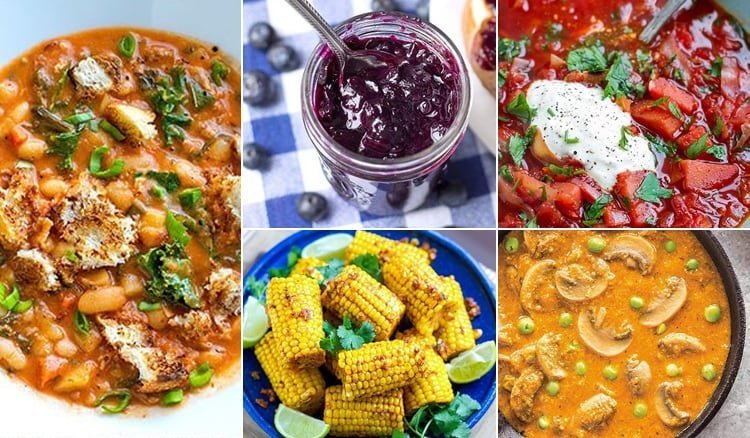
We're starting a new series of posts featuring seasonal recipes with your Instant Pot for each month of the year. We're covering the most common seasonal ingredients in the northern hemisphere and how they can be used in pressure cooking. Of course, not all seasonal foods are fit for this cooking method, so we're choosing those that are great to prepare with your Instant Pot pressure cooker.
Next up: What To Cook In You Instant Pot In July
What's In Season In June
Beets
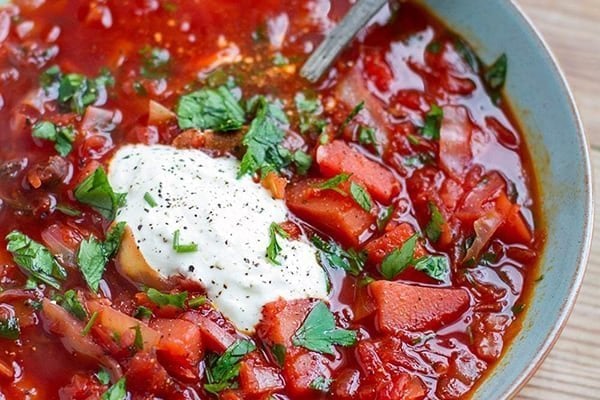
Many people get their first taste of beets via canned or pickled. Fresh undercooked beets are tough, fibrous, and tasting earthy. Seek out beets that feel heavy for their size, with no mushy or black areas. If sold with their greens attached, the leaves should be sprightly (not wilted) with no yellow spots. Every single part of the beet is edible — roots, stems and leaves.
Beets play a huge part in Russian and Eastern European cuisine, the most famous dish is borscht (a beet-based soup). Beets are also used in baking, as both a food coloring and to add moistness. Beetroot can be eaten raw, roasted, boiled, steamed, sautéed and even made into chips. They are can be paired with salty or creamy cheese (think feta, goat, ricotta), nuts and citrus.
Beetroot can be stored loose in your fridge’s veggie drawer for at least two to three weeks, or longer. Beet greens are delicate and should be cooked within two or three days of purchase; cut greens from the roots and store in a plastic bag in the fridge.
Beet leaves are excellent raw, boiled, steamed, and sautéed. Add the leaves to any recipe calling for spinach or chard. Beet stems are also delicious and can be cooked the same way you’d cook chard stems or bok choy; either boil in salted water until tender or sauté.
Beetroot is high in fiber, folate, and manganese, and is a decent source of Vitamin C, potassium and magnesium. The greens, though, are really the nutritional powerhouse of the plant. They are super high in fiber, Vitamin A, Vitamin C, Vitamin K, riboflavin, calcium, iron, magnesium, copper, and manganese.
Instant Pot Recipes with Beets
- Delicious Instant Pot Borscht (Beet Soup)
- Instant Pot Beet Risotto With Goat’s Cheese
- Instant Pot Pressure Cooker Beets from Nom Nom Paleo
- Instant Pot Beets Salad (Paleo, Whole30, Vegan) from Yangs Nourishing Kitchen
Blueberries
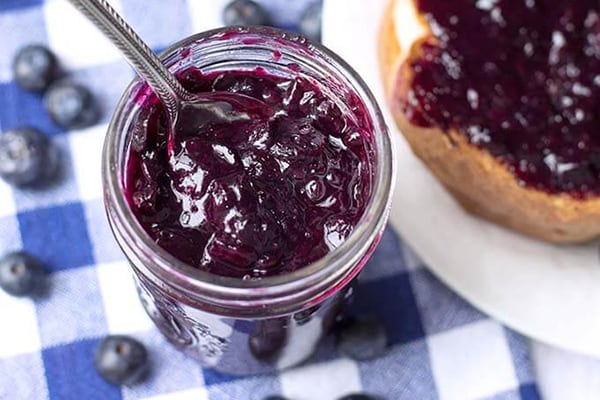
Wild blueberries were first harvested commercially in the 1840s. In New Jersey in 1911, botanist Frederick Colville, with Elizabeth Coleman White, started experimenting with wild varieties of blueberries in order to create strains more suitable for cultivation. The commercial blueberry growing industry soon expanded to multiple US states and around the world.
Look for firm, dry, plump blueberries with smooth skin and no shrivelled or moldy bits. Some blueberries may have a faint white powdery coating (called “bloom”) that is naturally occurring and helps to protect the berries.
If you plan to use your blueberries within a day, store them right on the counter. Otherwise, stick them, unwashed, in the fridge in the container they came in. They will keep for up to a week. Discard damaged berries because they bring moisture and mold that can quickly ruin an entire container of the fruit.
Blueberry sauces pair deliciously well with savory dishes such as pork, duck. Toss a handful of berries into a green salad. Blueberries naturally work perfectly with sweet treats such as muffins, pies, cobblers, pancakes and crisps, blueberry sauce, jams, smoothies and cookies. The easiest way to enjoy blueberries year-round is to freeze them.
Blueberries are one of the world’s healthiest fruits. Not only are they a good source of Vitamin K, Vitamin C and manganese; they are also high in fiber and relatively low in calories. They are naturally rich in polyphenols, and antioxidant chemicals that are increasingly linked to big-time health benefits, including in cardiovascular health, brain functioning (including memory), and even cancer prevention.
Blueberry recipes in Instant Pot Recipes
- Instant Pot Oatmeal With Blueberries & Maple Peanut Butter
- Instant Pot Blueberry Jam from Simply Happy Foodie
- Instant Pot Blueberry Cheesecake from Crystal and Co.
- Instant Pot Steel Cut Oats from Skinny Taste
Cabbage
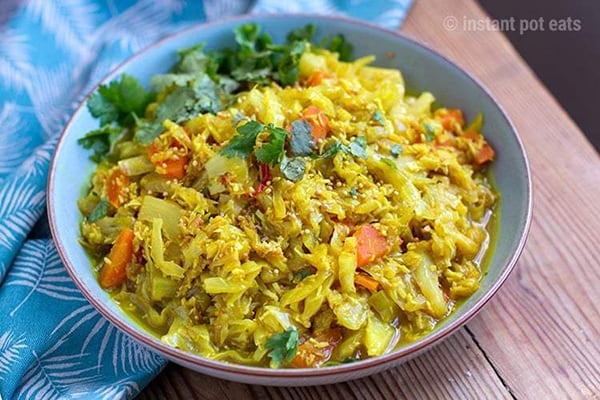
Cabbage is a rich source of vitamin C and vitamin K amongst other nutrients. It's another vegetable high in fiber, which is why raw cabbage can sometimes cause a bit of flatulence. Nevertheless, it has many health benefits and research suggests that cruciferous vegetables, including cabbage, may have protective effects against cancer.
Cabbage is prepared and consumed in many ways from raw salads such as coleslaw to braised dishes such as cabbage rolls and cabbage soup. Pickling is one of the most popular ways of preserving cabbage, creating dishes such as sauerkraut and kimchi.
Cabbage is great for pressure cooking as it can withstand high temperatures quite well and for many dishes, it requires longer cooking times. Braised cabbage dishes, stews, and soups with cabbage are best suited to the Instant Pot, however, you can also use the Sauteé function to stir-fry thinly sliced cabbage in some butter and garlic for a simple side dish.
Instant Pot Recipes with Cabbage
- Sri Lankan Coconut Cabbage
- Unstuffed Cabbage Bowls from Skinny Taste
- Borscht (Beet Soup)
- Instant Pot Cabbage Recipe With Creamy Cheesy & Garlicky Sauce
Cherries
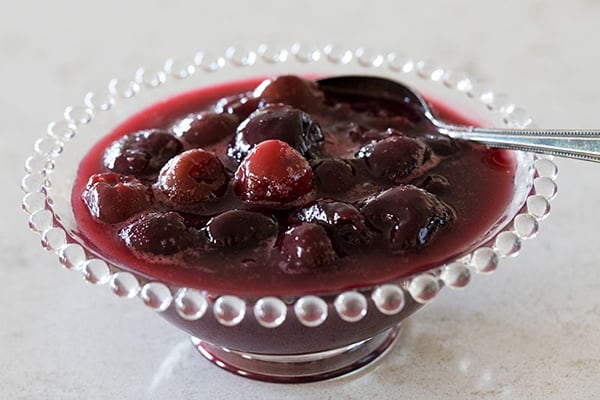
Sour and sweet cherry have a long lineage that probably originated in western Asia. After Turkey, the US is the world’s second-leading producer of cherries, with Washington State leading the pack. Oregon, California and Idaho are also major contributors to the sweet cherry harvest.
The cherry is fragile because of its soft flesh. Look for dark, juicy, and firm to get a sweet cherry. Peak cherry harvest runs from late spring through summer. Cherries are highly perishable. Keep in the refrigerator unwashed until ready to eat. Wash thoroughly before serving. To have them longer you can freeze them. Wash, stem and remove the pits. Place on a baking sheet in a single layer to prevent clumping and transfer to the freezer, then transfer cherries to a freezer bag.
Once pitted, the cherry can be eaten raw or cooked, savory or sweet, fresh or preserved. You can make cherry salsa, clafoutis, pie (or hand pies), cobbler, brownies, jam, ketchup, and fruit leather.
One cup of cherries (approximately 21 pitted) have just 90 calories and is a rich source of potassium and Vitamin C, plus fiber and even a small amount of protein. Cherries red pigment or anthocyanins, possess preventative powers that have been linked to a lowered risk of Alzheimer’s disease, heart disease, and diabetes. As an anti-inflammatory, the cherry is showing great potential as a pain reliever for arthritis.
Instant Pot Recipes with Cherries
- Instant Pot Homemade Cherry Jam from Recipes Simple
- Instant Pot Cake from The Typical Mom
- Instant Pot Cherry Clafoutis Recipe from Two Sleevers
- Pressure Cooker Cherry Compote from Pressure Cooking Today
Corn
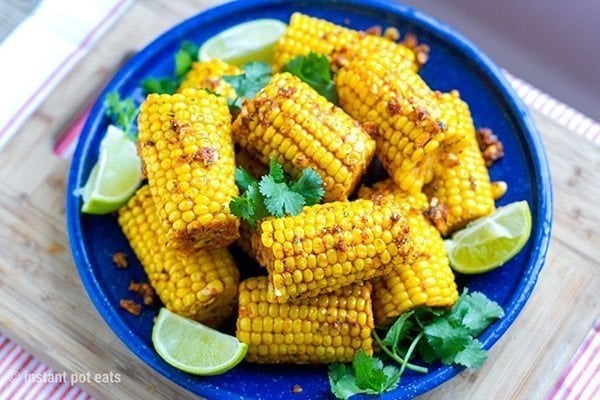
There is a lot of corn and several major types, including sweet corn (vegetable we eat), dent or “field” corn (animal feed and other industrial applications like ethanol), flour corn (used for cornmeal), and flint corn (known as Indian corn, often beautifully multicolored).
Sweet corn is available only in the summer and early fall. Because sweet corn is at its best when really, really fresh, try to seek out local corn from farmers markets or farm stands. The kernels do become starchier and less sweet the longer the ears are stored.
Look for ears that are firm, plump and fairly unblemished. Contrary to popular belief, you do not have to strip the ears of their green husk before purchasing them (and in fact, this drives farmers crazy). Just gently squeeze down the length of the ear to feel for bald spots.
Corn is amazingly versatile. The ears can be grilled, boiled, steamed or roasted; the kernels can be creamed, made into pancakes, turned into relish, added to salsa and even churned into ice cream. You can even eat fresh kernels raw right off the cob. Cornmeal is used to make tortillas, tamales, cornbread, corn dumplings, and corn pudding, among many, many other dishes from around the world. Hominy is made from corn kernels soaked in lime and is available dried or canned.
Corn freezes well. Blanch the corn (easiest to do still on the cob) for 3-4 minutes in boiling water, and then quickly cool in an ice bath (ice plus water). Pat dry. Cut the kernels off the cob, place in freezer bags and freeze.
Fresh corn is a good source of Vitamin B6, thiamin, niacin, magnesium, iron and a number of other important minerals. Corn is also low in fat and high in dietary fiber and protein. Eating corn with beans provides all of the amino acids that humans need, as corn is high in methionine but lacking in lysine, while beans are high in lysine but lacking in methionine.
Instant Pot Recipes with Corn
- Instant Pot Corn On The Cob (With Cajun Butter & Lime)
- Instant Pot Corn Sweet Potato & Chipotle Soup
- Instant Pot Yellow Rice With Peas & Corn
- Instant Pot Mac and Cheese With Corn
- Instant Pot Quinoa Salad With Corn & Crispy Bacon
Green beans
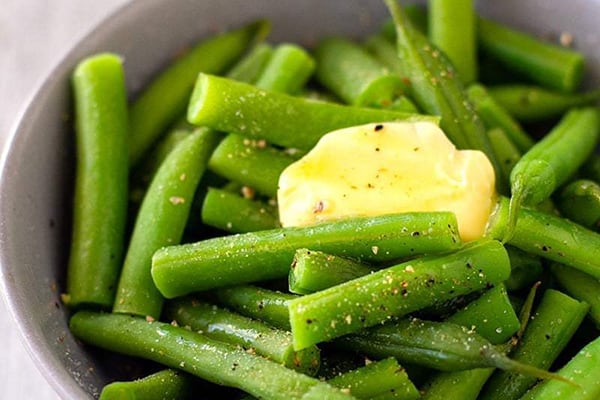
Green beans are the unripe, young fruit and protective pods of various cultivars of the common bean. Green beans are known by many common names, including french beans, string beans, snap beans, and snaps. Over 130 varieties of green beans are known.
Bush beans are short plants, growing to not more than 2 feet (61 cm) in height, often without requiring supports. They generally reach maturity and produce all of their fruit in a relatively short period of time, then cease to produce. Pole beans have a climbing habit and produce a twisting vine, which must be supported by "poles" or trellises. Green bean pods contained a "string", a hard fibrous strand running the length of one side of the pod. This string was either removed before cooking.
Green beans are eaten around the world, and are sold fresh, canned, and frozen. They can be eaten raw or steamed, boiled, stir-fried, or baked. They are commonly cooked in other dishes such as soups, stews, and casseroles. A popular dish is green bean casserole.
Nutritionally, green beans are a healthy vegetable as a good source of fiber, potassium, and folate, and are an excellent source of protein, iron, and zinc. They contain antioxidants similar to those found in green tea, also known as catechins, which can improve heart health and help prevent cancer and manage/prevent diabetes.
Green bean Instant Pot Recipes
- Instant Pot Green Beans With Butter & Cracked Pepper
- Instant Pot Green Bean Casserole
- Instant Pot Potato Salad With Tangy Vinaigrette (Vegan, Gluten-Free)
- 10-Minute Zucchini Noodles With Garlic, Lemon & Parmesan
- Turkish-style Braised Green Beans
Greens: Collards, kale, mustard, turnip, Spinach
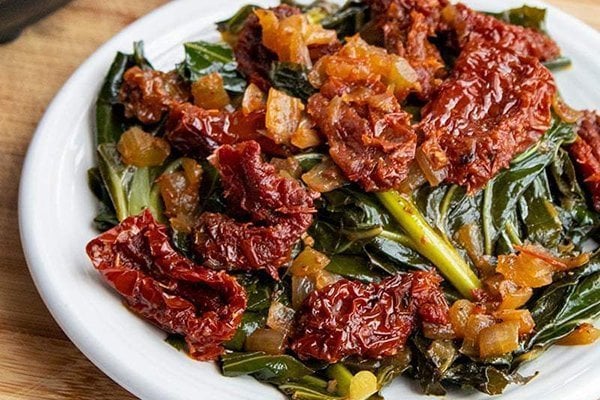
It's no news that leafy greens are good for you. We're talking kale, spinach, and collards here. Naturally gluten-free, all leafy greens are low in calories and carbohydrates yet can be quite satiating when consumed with a little added fat, which helps with vitamin absorption.
Both kale and collard greens contain substantial amounts of vitamin K and are rich in vitamin A, vitamin C, and manganese, and moderate sources of calcium and vitamin B6. Leafy greens are also high in iron and provide dietary fiber. Being low in calories and sugar, leafy greens are great for weight loss and healthy eating.
Depending on the hardiness of the leaves, greens can be cooked in a variety of ways. Spinach and other thin-leaf green veggies are great raw, while tougher kale and collards are best cooked. Instant Pot is great for cooking collard greens and kale as a side dish and you can add leafy greens to any stew, soup, curry, pasta or risotto you make in the pressure cooker.
Instant Pot Recipes with greens
- Collard Greens With Sun-Dried Tomatoes
- Zuppa Toscana (Tuscan Soup)
- Leek, Kale & Potato Soup
- Quick & Easy Italian Farmhouse Vegetable Soup
- Indian Spinach Rice (this can be made with any leafy greens)
- Leek, Kale & Potato Soup
Leeks
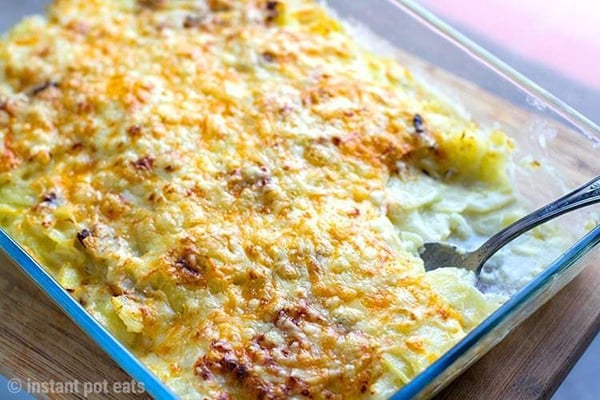
Common leeks kind of look like a giant scallion. Leeks were probably first cultivated by the Egyptians, who liked leeks so much they painted their tombs with images of them. They have a straight, white stem that gradually becomes lighter green, making way to the dark, almost blue-green of the top leaves.
Seek out leeks on the smaller side, one to two inches in stem diameter, three inches tops. Larger leeks tend to get woody and a bit tough. Leek greens should be very dark green with no yellowing or wilted spots. The white stem should be very white and firm with no black, mushy or discolored areas.
Leeks have a mild onion, sweet flavor. Most recipes call for only the “white and light green parts” of the vegetable, but the dark green leaves can be saved to use in stock making (veggie, beef, chicken, etc.). Leek stems can be braised, grilled, roasted, fried, steamed, sautéed and used raw in salads. They also pair well with dairy products.
Leeks will keep in your veggie drawer, wrapped in a paper towel, for at least a week. Don’t wash leeks before you refrigerate them, as this accelerates their decline.
The thing about preparing leeks is that they are really dirty, with gritty bits of sand frequently hidden in the layers that make up the stems. They have to be cleaned very thoroughly (good description of how to clean leeks, or here is a great video that shows two different techniques for cleaning the veggie).
Leeks are very high in Vitamins A and K and are good sources of Vitamin B-6, folate, iron, calcium, and manganese. They are also high in fiber and low in calories. Leeks are toxic to dogs and cats, so keep them (and their Allium relatives) away from your furry friends.
Instant Pot Recipes with Leeks
- Instant Pot Scalloped Potatoes & Leeks
- Leek, Kale & Potato Soup
- Butternut Risotto With Leeks & Spinach from Feasting At Home
- Wild Mushroom Leek Risotto from Flavor the Moments
Peas
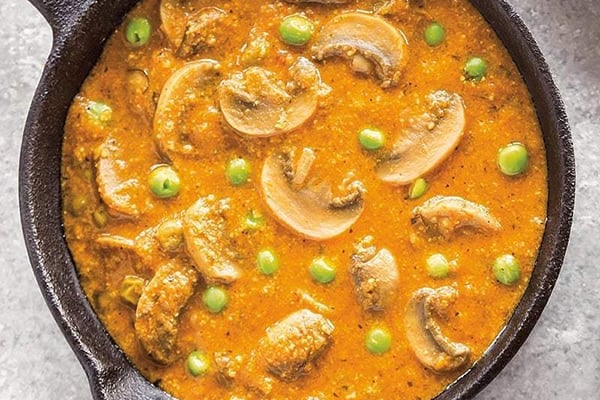
Peas are a type of legume native to the Middle East, specifically to the area around what is now Turkey and Iraq. From the Middle East, the legume spread rapidly to Europe. The pea was an important source of food for peasants in the Middle Ages, providing protein and other nutrients in lean times.
Snow peas and sugar snaps are often used in stir-fries, pairing with garlic, sesame oil, and soy sauce. Sugar snaps are also pretty excellent raw. Pea shoots and tendrils can be eaten like a green braised in a little bit of liquid, or sautéed, or tossed, raw, into salads. Dried peas (split peas) tend to break down quite a bit when cooked so they are great for Split pea soup using a chunk of a ham hock with the peas while the soup cooks.
When shopping for garden peas, look for pods that are plump and bright green, with no wilted or brown spots. All parts of the pea plant are edible from the shoots, tendrils, and leaves, flowers, pods and, of course, the seeds (the peas themselves).
Fresh peas in the pod will keep for at least a week in the produce drawer of your refrigerator. They will get starchier and less sweet the longer you wait to cook them. Even after a longer period of time, when the pods look a little gnarly, the peas inside are usually okay.
Every variety of pea is really good for you. Garden peas are higher in calories than most other veggies and are rich in fiber and protein. They also have huge amounts of Vitamins C, A, K, and folate, and are high in manganese, iron, zinc and magnesium. They even contain a little bit of calcium.
Dried peas (aka split peas) have even more protein and fiber than fresh peas, and contain more folate and potassium than fresh. Snow peas and sugar snaps have a large amount of Vitamin C — just one cup provides you with 128 percent of your daily Vitamin C needs. They’re also super high in Vitamins A and K and are good sources of iron and Vitamin B6.
Peas were key to the creation of the modern science of genetics: Gregor Mendel, an Austro-Hungarian monk, conducted the very first experiments on the inheritance of traits in pea plants, which lead to the formation his theory of inheritance, which basically forms the basis of all of genetics.
Instant Pot Recipes with Peas
- Instant Pot Curry With Mushroom & Peas (Matar Mushroom)
- Instant Pot Yellow Rice With Peas & Corn
- Instant Pot Risotto With Pea & Celery (Quick & Easy)
- Instant Pot Creamy Macaroni Salad With Peas, Ham & Corn
- Instant Pot Pea Soup With Pan-Fried Frankfurter Sausages
Zucchini
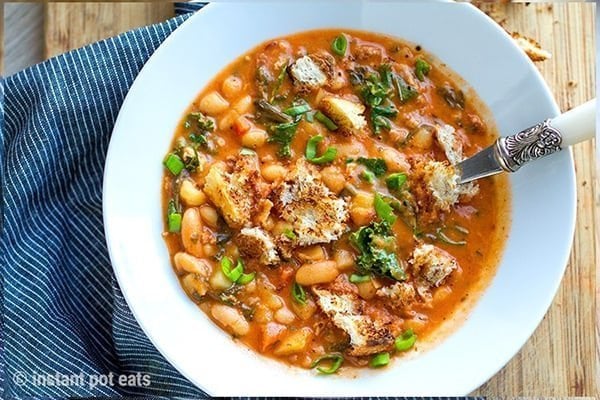
Zucchini is mild which means, it goes nicely with garlic, tomatoes, leafy herbs, olives, roasted peppers, onions, and various cheeses. Zucchini can be sautéed, batter-fried, stuffed, grated, grilled, pureed, and roasted. Zucchini can go into sweet dishes, too for an added healthy appeal. Avoid the dull and bruised zucchini when purchasing.
The zucchini is part of the extensive Cucurbitaceae family, which includes cucumber, watermelon, and winter squash. Before Christopher Columbus brought squash seeds to Europe. Once in Europe, the Italians coined the big-boned relatives as zucca and its more petite kin as zucchini. Not until the 1920s did Italian immigrants bring back zucchini to America.
One cup of raw zucchini is just 18 calories. A rich source of Vitamins B-2, B-6, and C, potassium (great for blood pressure), zucchini also offers decent amounts of fiber and even a little bit of protein.
Keep zucchini refrigerated until ready to use; wrap in paper instead of plastic, which creates moisture. Zucchini should be used within two or three days of purchase. Otherwise, zucchini gets mushy and moldy. Zucchini goes bad quickly. To keep it around a little longer (about three months), cut it into ½-inch pieces, blanch, and freeze. You can also slice it into thin rounds and dehydrate zucchini, or pickle it.
Zucchini Instant Pot Recipes
- Instant Pot Zuppa Toscana (Tuscan Soup)
- 10-Minute Zucchini Noodles With Garlic, Lemon & Parmesan
- Thai-inspired Soup With Corn & Zucchini
- Instant Pot Red Lentil Zucchini Dal from Carve Your Craving
- Instant Pot Healthy Zucchini Banana Bread from Tidbits
- Creamy Instant Pot Zucchini Soup
- Instant Pot Chocolate Zucchini Cake
For a full list of what's in season in June in the USA, check out this post: What’s In Season Around the Country: June
SAVE THIS POST TO PINTEREST
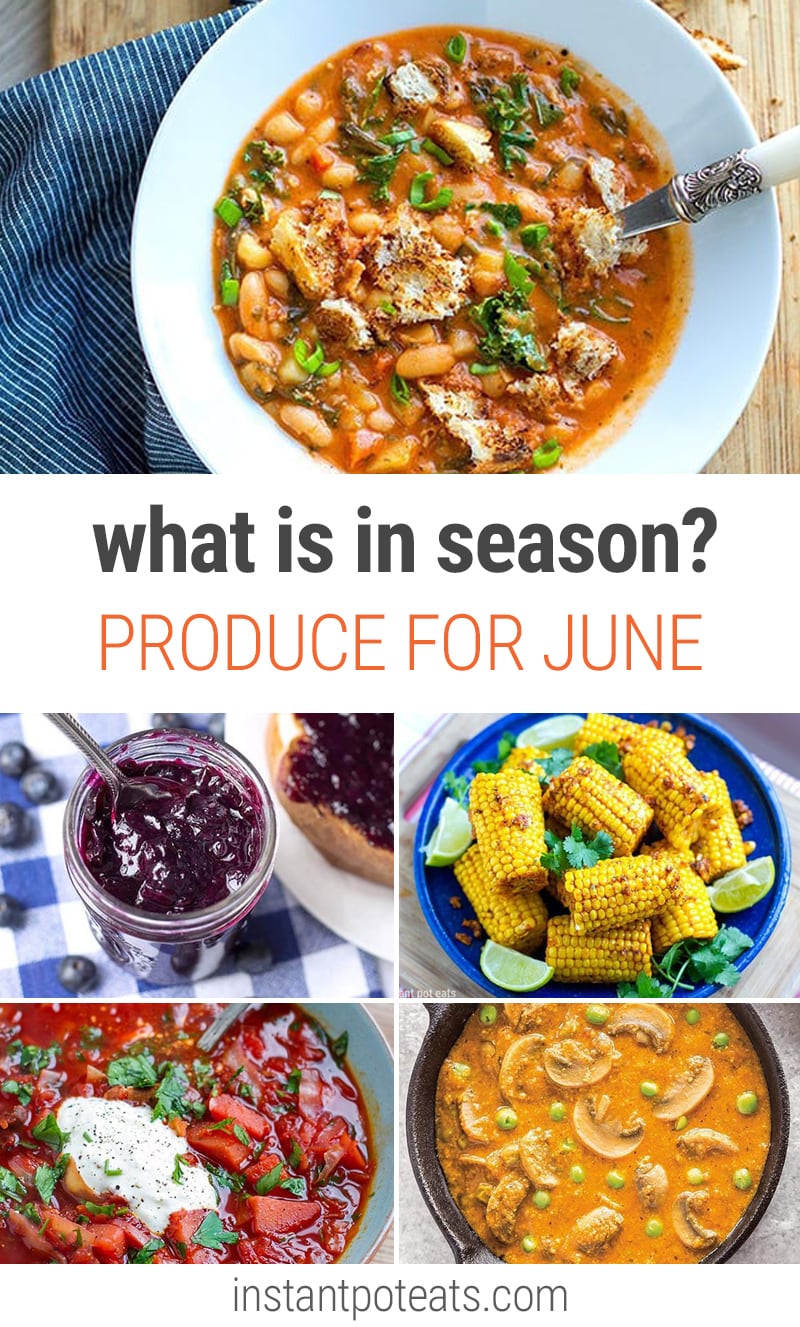



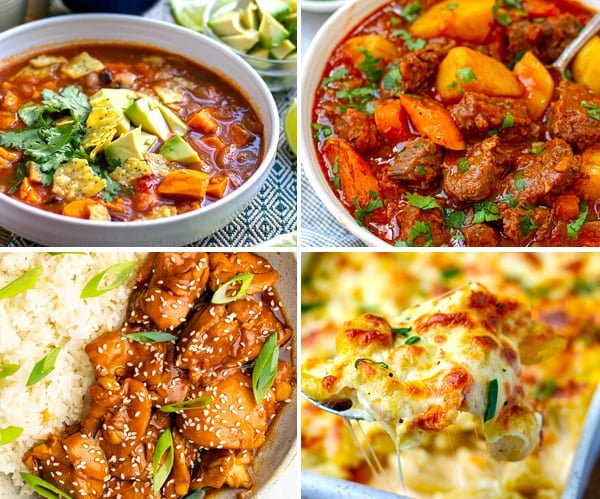
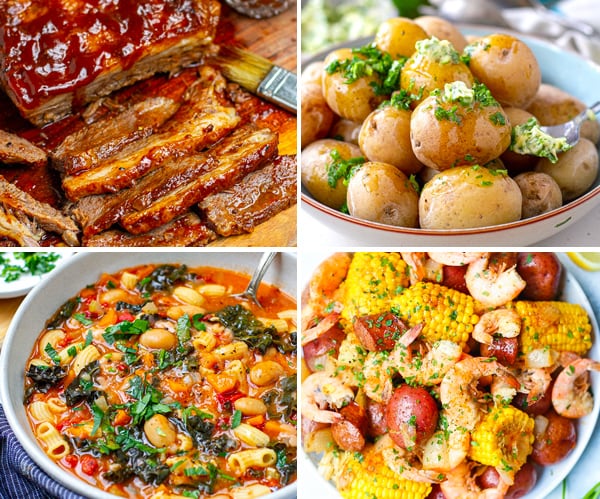
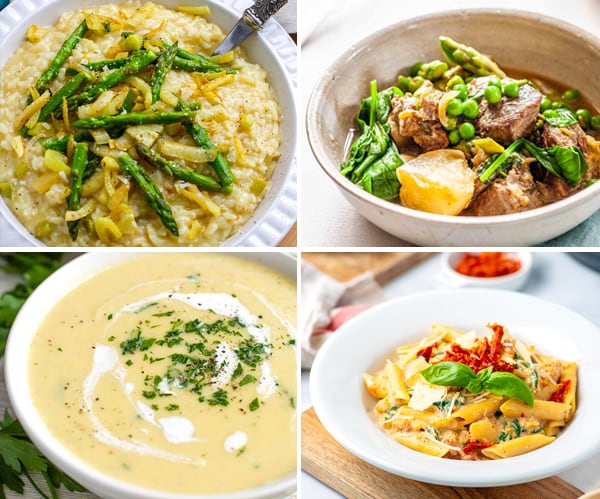
Leave a Reply